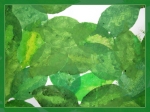What are Shabtis?
A shabti is a small figure that was placed in the tomb of an Ancient Egyptian. They are sometimes called ushabtis or shaptis. The Ancient Egyptians believed that the afterlife would be much like this one, so they created shabtis to serve the dead in their next life doing tasks such as irrigating the river and farming fields. Although the design, materials and size of figures changed over time, all shabtis have several features in common.
What did they look like?
Shabtis are based on human figures that have been mummified and just like mummies, shabtis are usually sculpted with their legs bound together and their arms folded. It is a common feature for older shabtis to feature an inscription in hieroglyphics on the lower part of the body. This was later replaced with the name and title of their owner. The inscription was a spell binding the shabti to the deceased and calling them to serve in the afterlife.
Shapti Spell
Although there are lots of variations of the spell, it could be translated into english as:
O, shabti, if you are called upon.
To do all the work that needs to be done in the afterlife.
“Here I am!,” you will say when you are called to serve.
To farm the fields, to irrigate the river and to ferry sand.
“Here I am,” you will say.

This shabti’s lower body has been decorated with the ‘shabti spell’, binding it to serve the deceased in the afterlife.
What were shabtis made from?
Shabtis were made out of lots of different materials. It was not uncommon for the Shabtis of the wealthy to be carved out of precious stones such as alabaster or turquoise. Poorer egyptians might have simpler shabtis made from clay, wood or even mud.

Many wealthy egyptians would have a shabti to serve in the afterlife for each day of the year. As well as the worker shabtis, they would also have an ‘overseer’ for every 10 workers.
More Shabti Facts
- Tutankhamun had 413 shabtis in his tomb
- King Taharqa had over a thousand.
- Shabtis are the most common ancient egyptian artifact remaining today.
- The shabti spell is written in the ancient egyptian ‘Book of the Dead’
Design a Shabti!
Next week we are going to design our own shabtis and decorate them with our names in hieroglyphics. Why not have a go yourself using one of these outline templates.
Image Credits
Close up of shabti: koopmanrob / Foter.com / CC BY-SA
Shabti spell: CESRAS / Foter.com / CC BY-NC-SA
Group of shabtis: koopmanrob / Foter.com / CC BY-SA





















